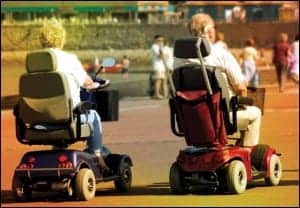Data from a multicenter Pan-Euro study of the EksoGT wearable skeleton, from Ekso Bionics Holdings Inc, was published recently in the International Spinal Cord Society’s (ISCOS) peer-reviewed journal, Spinal Cord.
According to the company in a media release, the results suggest that the EksoGT is safe and feasible for use, as well as improves training characteristics and changes in gait function for persons with SCI, including those with paraplegia and tetraplegia, recent and chronic injuries, as well as complete or incomplete SCI.
“In combination with the 35 US studies and 25 EMEA studies conducted with the EksoGT, we are paving the way on quantifying the benefits of exoskeleton gait rehabilitation and ultimately redefining rehabilitation for a broader range of patients with SCI,” comments Thomas Looby, president and chief executive officer of Ekso Bionics, in the release.
Per the release, the open-label, prospective study was conducted at nine European SCI rehabilitation centers, and it was designed to assess safety, feasibility, training characteristics and changes in gait function for SCI using the EksoGT exoskeleton. The study enrolled a total of 60 participants, 52 of whom completed at least 16 of the 24 exoskeleton gait training sessions that were conducted as an “add on” to their existing training three times per week over a total of 8 weeks.
The primary objective of the study was to assess safety and feasibility of exoskeleton training, while the secondary objective evaluated changes in gait function outside of the exoskeleton. Assessments were conducted at baseline, the twelfth training session, the final training session, and at a follow-up session 4 weeks after the last training session.
Results from the study demonstrate that all training characteristics increased significantly from baseline to the end of the training period (up time: F = 2.168, P < 0.001; walk time: F = 10.988, P < 0.001; steps: F = 15.556, P < 0.001) for all SCI subgroups: recently (<1 year) and chronically (>1 year) injured, paraplegia and tetraplegia, and incomplete and complete injury (P < 0.001). Participants with incomplete injuries had more steps per session than those with complete SCI, with a mean difference of 335 steps (95% CI 112-558, P = 0.004).
In the recently injured group, gait function increased from five participants (20%) at baseline to 14 participants (56%) by the end of the training period (test statistic = 7.11, P = 0.004). This group also showed significant improvement in the 10 Meter Walk Test (10MWT), Timed Up and Go (TUG), Berg Balance Scale (BBS) and Lower Extremity Motor Score (LEMS) results (P < 0.05).
Gait function for the chronic injury group increased from 11 participants (40%) to 12 participants (44%), including one participant with a 13 year-old T12 injury, AIS D, acquiring gait function by the end of the training period. The group observed improvements in TUG and BBS results (P < 0.05). Both groups retained improved gait function at follow-up. In addition, two participants with chronic, complete SCI reported improved sitting balance following training.
“The Pan-Euro study shows that the EksoGT is safe and feasible for persons with SCI with different levels and severity of injuries and that it may have potential benefits in those with incomplete SCI on gait and balance function,” says Carsten Bach Baunsgaard, MD, at the Clinic for Spinal Cord Injuries, Rigshospitalet, University of Copenhagen, and the study’s first author.
“Furthermore, the study also shows that it can be used by recently injured persons as well as those who have sustained their injuries several years ago. We look forward to bringing more of our patients onto their feet earlier.”
[Source: Ekso Bionics Holdings Inc]





